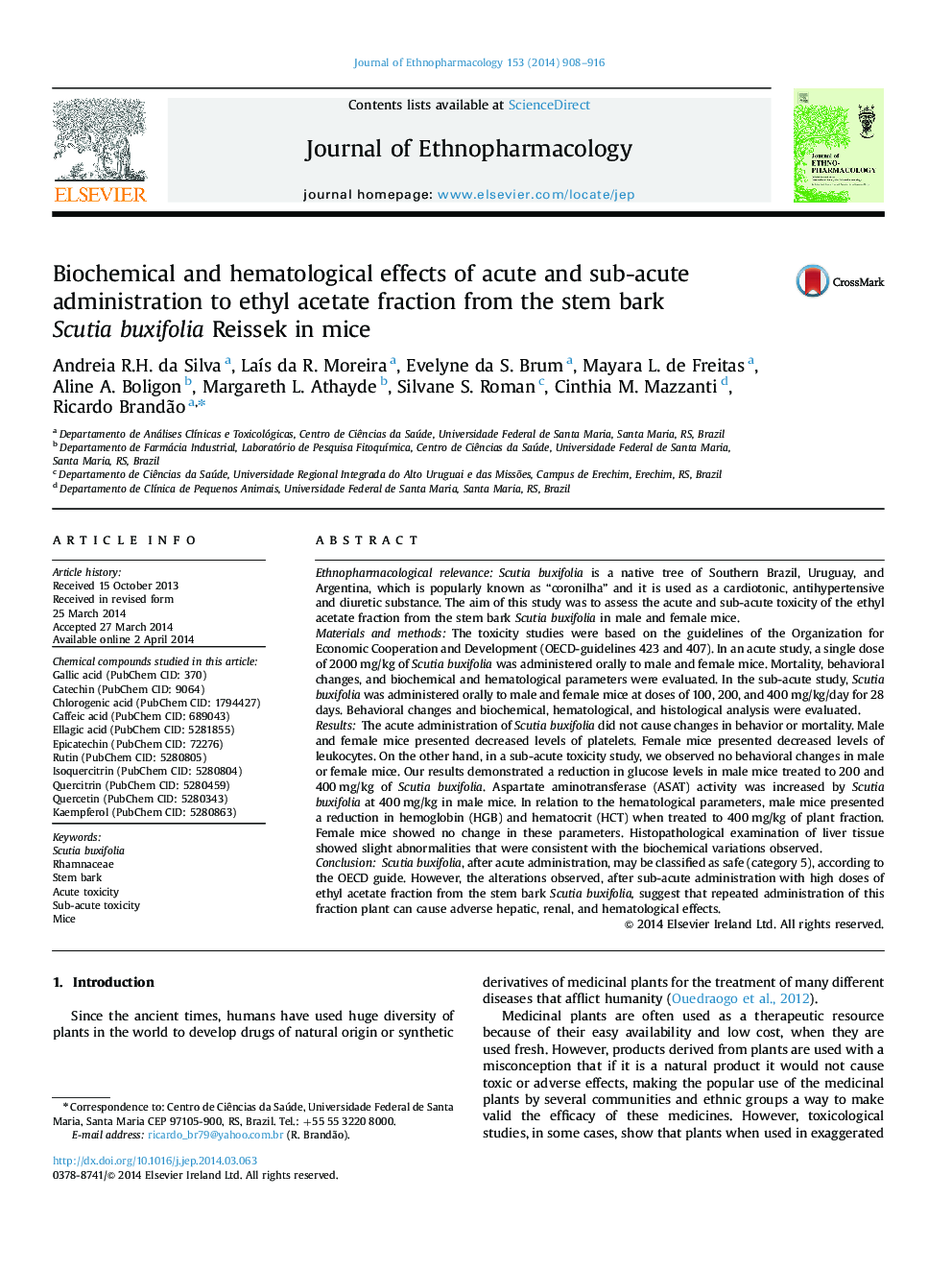| کد مقاله | کد نشریه | سال انتشار | مقاله انگلیسی | نسخه تمام متن |
|---|---|---|---|---|
| 2545122 | 1123934 | 2014 | 9 صفحه PDF | دانلود رایگان |

Ethnopharmacological relevanceScutia buxifolia is a native tree of Southern Brazil, Uruguay, and Argentina, which is popularly known as “coronilha” and it is used as a cardiotonic, antihypertensive and diuretic substance. The aim of this study was to assess the acute and sub-acute toxicity of the ethyl acetate fraction from the stem bark Scutia buxifolia in male and female mice.Materials and methodsThe toxicity studies were based on the guidelines of the Organization for Economic Cooperation and Development (OECD-guidelines 423 and 407). In an acute study, a single dose of 2000 mg/kg of Scutia buxifolia was administered orally to male and female mice. Mortality, behavioral changes, and biochemical and hematological parameters were evaluated. In the sub-acute study, Scutia buxifolia was administered orally to male and female mice at doses of 100, 200, and 400 mg/kg/day for 28 days. Behavioral changes and biochemical, hematological, and histological analysis were evaluated.ResultsThe acute administration of Scutia buxifolia did not cause changes in behavior or mortality. Male and female mice presented decreased levels of platelets. Female mice presented decreased levels of leukocytes. On the other hand, in a sub-acute toxicity study, we observed no behavioral changes in male or female mice. Our results demonstrated a reduction in glucose levels in male mice treated to 200 and 400 mg/kg of Scutia buxifolia. Aspartate aminotransferase (ASAT) activity was increased by Scutia buxifolia at 400 mg/kg in male mice. In relation to the hematological parameters, male mice presented a reduction in hemoglobin (HGB) and hematocrit (HCT) when treated to 400 mg/kg of plant fraction. Female mice showed no change in these parameters. Histopathological examination of liver tissue showed slight abnormalities that were consistent with the biochemical variations observed.ConclusionScutia buxifolia, after acute administration, may be classified as safe (category 5), according to the OECD guide. However, the alterations observed, after sub-acute administration with high doses of ethyl acetate fraction from the stem bark Scutia buxifolia, suggest that repeated administration of this fraction plant can cause adverse hepatic, renal, and hematological effects.
Figure optionsDownload high-quality image (205 K)Download as PowerPoint slide
Journal: Journal of Ethnopharmacology - Volume 153, Issue 3, 14 May 2014, Pages 908–916